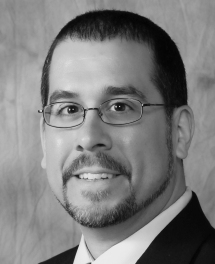Todd Searls was a recent guest on HITECH Answers MU Live! We asked the question we figured was on everyone’s mind.The answer was multi-layered. What follows is Todd’s two-part article addressing this question in greater detail.

Todd Searls
Director of REC Operations, Wide River TEC
Nebraska’s Regional Extension Center for Health Information Technology (HIT)
As Director of a Regional Extension Center (REC), I’m often asked by those in the industry “What’s next for the RECs?” This is a nice way of asking “So how can you survive once the federal grant monies dry up?” It’s a perfectly appropriate question, not least because to date (November 2011) the REC program has enrolled over 100,000 Priority Primary Care Providers across the US. What will happen to them when Stage 2 and stage 3 Meaningful Use (MU) roll out if the RECs aren’t around to assist them? Sure, there are plenty of consultants who are willing to assist these clinics in meeting Meaningful Use, but most of the REC client base is heavy on smaller clinics that can’t afford the fair market rate of your typical HIT consulting company, let alone afford to have them in their back pocket for 50 or more hours during their practice conversion to an EHR. So, how do we survive if future grant monies aren’t there to subsidize this work?
To understand that, I think you need to understand there is no one answer that can cover all RECs, just as there is no one approach that all RECs adopted to complete our initial work. There are currently 62 REC programs across the US and almost as many business models for how each currently operates. Of course there are a number of similarities; for instance, those with preferred vendor models and those without, those RECs who are fully staffed internally and those who subcontracted a significant amount of their work, but honestly, put us all in a room and you’ll see how difficult it is to categorize us by our service offerings. And this is as it should be, in my opinion, as each of us were awarded our grants with the specific purpose of helping providers overcome the unique challenges they face in our particular service areas. For example, do you work in a rural area, dominated by small rural health clinics, with no access to IT support and questions about qualifying for MU? Or maybe your community is a larger city with a heavy Medicaid population and you lack clarity on your state’s Medicaid plan as it relates to Meaningful Use. Or maybe you thought your staff had this whole “EHR” thing figured out, but now your EHR vendor won’t return your calls and you’re in danger of missing out on the 2011 attestation deadline. Or perhaps you just need someone to come in for a few hours and explain the Meaningful Use criteria to you in easy to understand language focused on your unique workflows and patient population without costing you a week’s wages in the process. Well, each of these scenarios is precisely why the RECs were created—to know the issues our local providers face in meeting Meaningful Use and to help find solutions specific to our unique market space.
Because of this, any future business platform that we stand up will rest upon the fact that we know our clients and their business challenges better than any other HIT organization they have ever worked with. Yes, we recognize that this is due in no small part to the fact that we were federally subsidized to get to know these PPCPs, but this relationship wasn’t created solely with the HITECH Act. The entire business model of the REC is rooted in the belief that if we help our own local and state physicians, everyone will be more invested in the process because the improvements will directly impact the health of our own communities and families. As a result, we’ve seen tremendous success in building business relationships with the same providers who must form the foundation of our sustainability moving forward. And while it is true that many of us will expand our client base to include more specialists and hospital systems after our Stage One monies run their course, the core audience of the Meaningful Use initiative is and always has been the primary care provider (PCP) and their patient population. These practices will form the core of the Patient Centered Medical Home, as well as the larger ACO model. Without the PCP’s continued adoption (and adaptation) of certified EHR technology, these two complimentary initiatives will never see the light of day and the movement towards the meaningful use of HIT will stop in its tracks.
Part two of this article concludes tomorrow.
